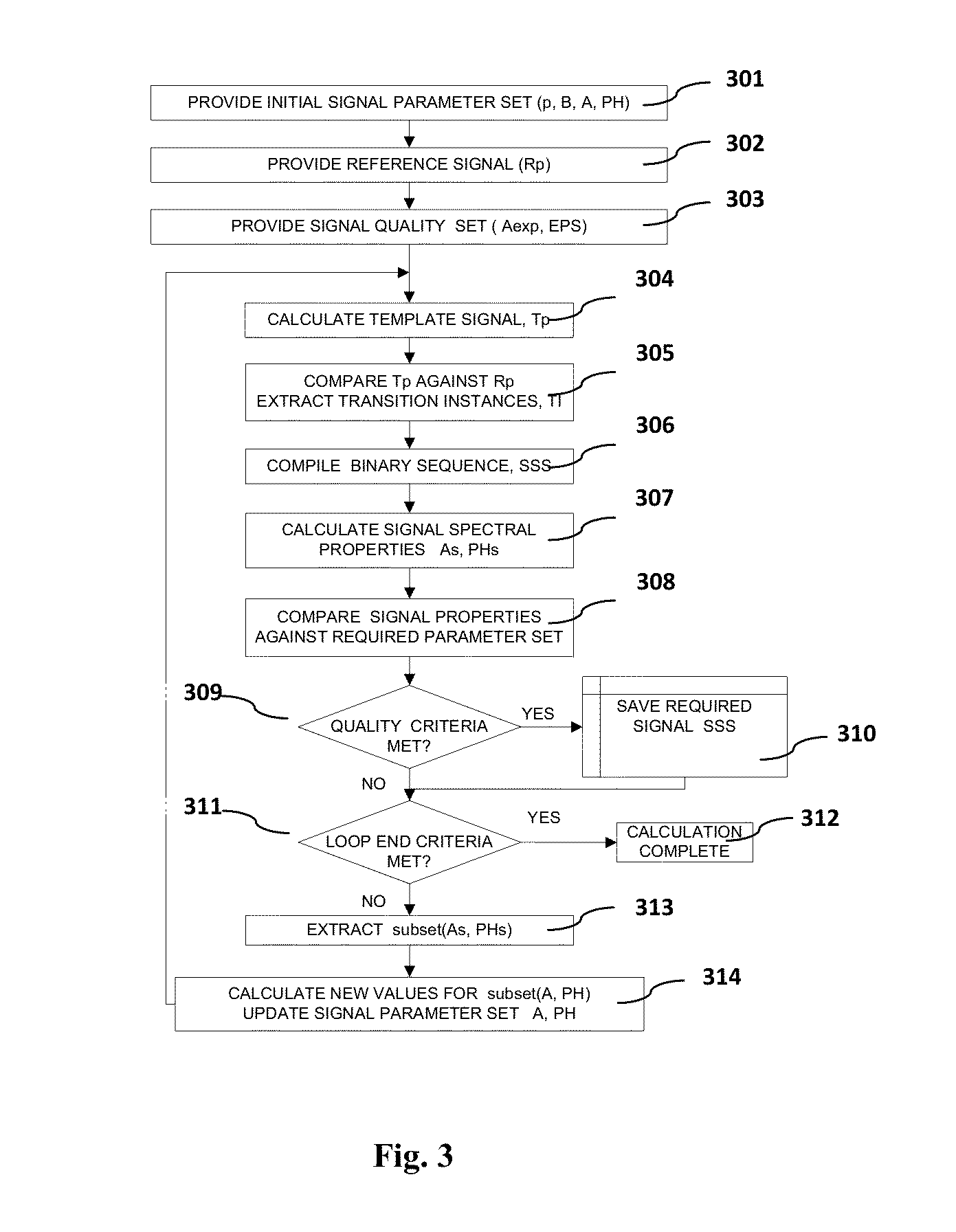Method and device for broadband analysis of systems and substances
a technology of broadband and transfer function, applied in the direction of material analysis using microwave means, transmission systems, sensors, etc., can solve the problems of serious measurement uncertainties, complicated measurement procedures, and serious problems such as multi-sine excitation, so as to reduce the necessity of calibration or compensation, simplify the embodiment, and the effect of improving accuracy and noise resistan
- Summary
- Abstract
- Description
- Claims
- Application Information
AI Technical Summary
Benefits of technology
Problems solved by technology
Method used
Image
Examples
Embodiment Construction
[0053]The aim of the invention is to synthesize and generate such a sequence of rectangular binary pulses, which energy is concentrated onto distinctly separate frequencies of interest. Energy level of different frequency components can be varied according to the requirements established by the SUT. As a result, the excitation signal obtains a comb like form with user defined frequencies in frequency domain, but maintains all the advantageous of rectangular waveforms in the time domain: the crest factor of binary sequence sustains the unity value, CF=1. As a result, much higher dynamic range and signal-to-noise ratio is achieved without discarding the ultimate advantage of binary sequence.
[0054]Embodiments of the present invention relate to the acquisition of the transfer function in case of systems and substances in comparably short time. The method is faster than traditionally used sweep frequency techniques, as the excitation signal stimulates the SUT simultaneously over the comp...
PUM
 Login to View More
Login to View More Abstract
Description
Claims
Application Information
 Login to View More
Login to View More - R&D
- Intellectual Property
- Life Sciences
- Materials
- Tech Scout
- Unparalleled Data Quality
- Higher Quality Content
- 60% Fewer Hallucinations
Browse by: Latest US Patents, China's latest patents, Technical Efficacy Thesaurus, Application Domain, Technology Topic, Popular Technical Reports.
© 2025 PatSnap. All rights reserved.Legal|Privacy policy|Modern Slavery Act Transparency Statement|Sitemap|About US| Contact US: help@patsnap.com



